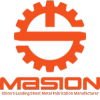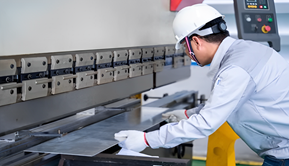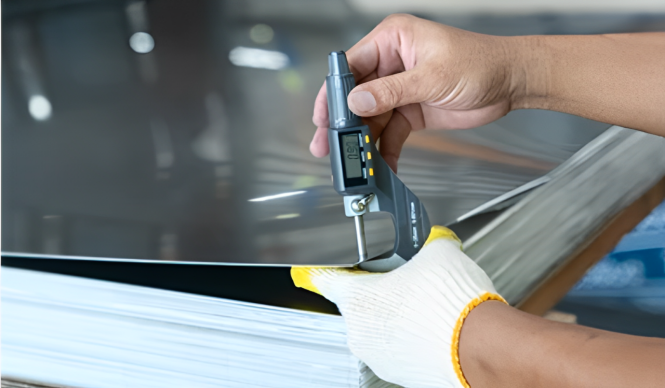Is Stainless Steel Magnetic?
The corrosion resistance is what add up value to the Stainless steel. You can find its usage in industrial machinery as well as kitchenware’s to name a few. Many perceive stainless steel as non-magnetic material. But this is not true for every type of stainless steel. It depends on the number of properties as well as chemical composition of the specific type. It is crucial to have better understanding on magnetism of various types to make the right selection for targeted application. The purpose of this blog is to offer comprehensive answer on “Is stainless steel magnetic?”. Get insights on the magnetic characteristics for every stainless steel type. Know the every unknown about stainless steel is magnetic or not. Let’s get started!
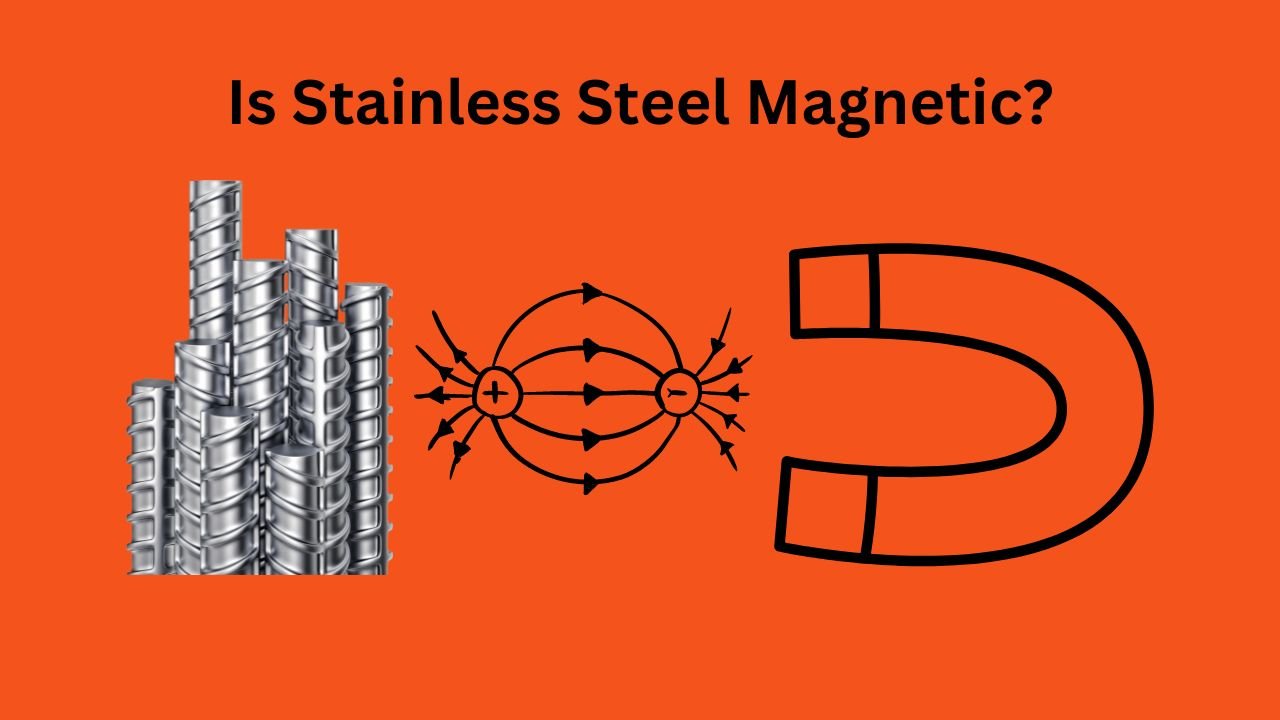
Table of Contents
ToggleRevealing Facts on Stainless Steel
Stainless steel refer to the durable and versatile alloy. It contains the chromium and iron as main constituting elements. While other elements that also goes into its composition includes manganese, nickel, and carbon. The presence of chromium as an element in composition of the stainless steel is what add up corrosion resistivity. It reacts with the atmospheric oxygen and forms a thin film of chromium oxide hence preventing further material degradation.
Stainless Steel Key Types
Austenitic Stainless Steel
The austenitic stainless steel features a crystal structure of face-centered cube. This type referred as non-magnetic type. The main reason behind this is the structure opposition to contribute to magnetic alignment. It also features excellent resistance to corrosion.
The following table shows the different grades falls under this type and their chemical composition:
| Sr. No. | Grade | Chromium (Cr) | Nickel (Ni) | Carbon (C) | Manganese (Mn) | Silicon (Si) | Phosphorus (P) | Sulfur (S) |
| 1 | 304 | 18-20% | 8-12% | 0.08% max | 2.00% max | 1.00% max | 0.045% max | 0.03% max |
| 2 | 316 | 16-18% | 10-14% | 0.08% max | 2.00% max | 1.00% max | 0.045% max | 0.03% max |
| 3 | 316L | 16-18% | 10-14% | 0.03% max | 2.00% max | 1.00% max | 0.045% max | 0.03% max |
| 4 | 309 | 23-26% | 11-14% | 0.20% max | 2.00% max | 1.00% max | 0.045% max | 0.03% max |
| 5 | 310 | 25-26% | 20-22% | 0.20% max | 2.00% max | 1.00% max | 0.045% max | 0.03% max |
The key applications of the above grades are common in kitchen appliances, processing equipments, and in marine environments.
One thing affect the magnetism of austinitic stainless steel is cold working. When you subject this type to cold working including the machine or bend processes. You can experience slight magnetism. This is mainly because a shift in structure from austenitic to martensite.
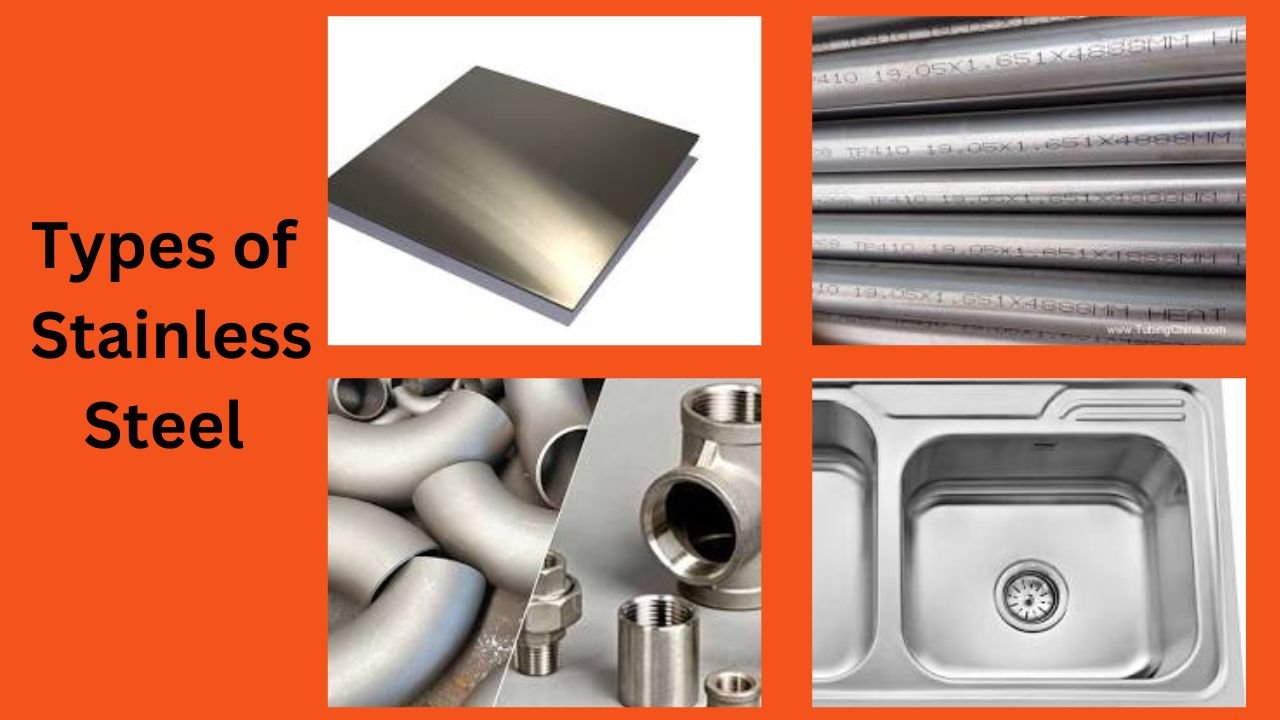
Ferritic Stainless Steel
The ferritic stainless steel features a crystal structure that has body-centered cubic shape. This is the reason why ferritic stainless steel shows stronger magnetic properties. The structure contributes to the magnetic alignment of domains.
You can witness the grades that comes under this type and their composition in the table below:
| Sr. No. | Grade | Chromium (%) | Carbon (%) | Other Elements |
| 1 | 409 | 10.5-13 | 0.12 max | Si, Mn, P, S |
| 2 | 430 | 14-18 | 0.12 max | Si, Mn, P, S |
| 3 | 430F | 14-18 | 0.12 max | Si, Mn, P, S, Ti, Al |
| 4 | 436 | 16-18 | 0.12 max | Si, Mn, P, S, Ti, Al |
| 5 | 442 | 17-20 | 0.12 max | Si, Mn, P, S |
| 6 | 446 | 23-27 | 0.12 max | Si, Mn, P, S |
| 7 | 448 | 23-27 | 0.12 max | Si, Mn, P, S, Cu |
You can use this stainless steel type in kitchen accessories, auto parts, and in industrial machinery. Apart because of the ability to keep the magnetic characteristics at higher temperatures. You can use it in heat exchanging equipment’s as well as exhaust manufacturing. It is cheaper than counterparts and resist the fracture.
Martensitic Stainless Steel
The martensitic stainless steel features crystal structure having body centered tetragonal structure. It is popular for the high hardness and strength. The information on the grades of the steel that comes under this category are:
| Sr. No. | Grade | Carbon (%) | Chromium (%) | Manganese (%) | Phosphorus (%) | Sulfur (%) | Silicon (%) | Nickel (%) |
| 1 | AISI 410 | 0.10-0.15 | 12-14 | 1 | 0.04 | 0.03 | 1 | 0.2 |
| 2 | AISI 420 | 0.20-0.35 | 13-15 | 1 | 0.04 | 0.03 | 1 | 0.2 |
| 3 | AISI 440A | 0.60-0.75 | 16-18 | 1 | 0.04 | 0.03 | 1 | 0.2 |
| 4 | AISI 440B | 0.75-1.00 | 16-18 | 1 | 0.04 | 0.03 | 1 | 0.2 |
| 5 | AISI 440C | 1.00-1.50 | 16-18 | 1 | 0.04 | 0.03 | 1 | 0.2 |
| 6 | AISI 431 | 0.08-0.12 | 16-18 | 1 | 0.04 | 0.03 | 1 | 0.2 |
| 7 | AISI 440F | 0.95-1.20 | 16-18 | 1 | 0.04 | 0.03 | 1 | 0.2 |
You can use this stainless steel in industry tools manufacturing, surgical components, and cutlery accessories. The corrosion assistance feature is this type is less than what you get in austenitic. Option exist to increase the hardness of this steel by further treatment through heat.
Duplex Stainless Steel
The duplex stainless steel contains half structure similar to ferrite and half that is similar to austenite. You can experience the properties of both in the type. The key features include super strength and good corrosion resistivity.
Duplex stainless steel grades are as follows:
| Sr. No. | Grade | Chromium | Nickel | Molybdenum | Nitrogen | Carbon |
| 1 | 2205 (S32205) | 21-23% | 3-5% | 2.5-3.5% | 0.15-0.30% | 0.03% max |
| 2 | 2507 (S32750) | 24-26% | 3.5-4.5% | 3.5-4.5% | 0.25-0.30% | 0.03% max |
| 3 | Z100 (S32760) | 25-27% | 3.5-4.5% | 3.5-4.5% | 0.25-0.30% | 0.03% max |
| 4 | UR52N+ | 22% | 5% | 3% | 0.15% | 0.03% max |
| 5 | L605 | 21-23% | 3-5% | 2.5-3.5% | 0.15-0.30% | 0.03% max |
| 6 | SAF 2507 | 24-26% | 3.5-4.5% | 3.5-4.5% | 0.25-0.30% | 0.03% max |
| 7 | UNS S32307 | 21-23% | 3-5% | 2.5-3.5% | 0.15-0.30% | 0.03% max |
The key areas where you can use this steel include gas sector, oil sector, marine sector, and in chemical sector. You can make accessories and equipment featuring corrosion resistivity, high strength and moderate magnetism.
Precipitation Hardening Stainless Steel
The precipitation hardening stainless steel offers higher strength and hardness. The structure of this type of stainless steel is in the form of precipitates or small particles.
You can witness these grades in this category of stainless steel type:
| Sr. No. | Grade | Chromium (Cr) | Nickel (Ni) | Manganese (Mn) | Silicon (Si) | Carbon (C) |
| 1 | 17-4 PH | 17 | 4 | 1 | 0.75 | 0.03 |
| 2 | 15-7 PH | 15 | 7 | 1 | 0.75 | 0.03 |
| 3 | AM-350 | 15 | 7 | 1 | 0.75 | 0.03 |
| 4 | PH 13-8 Mo | 13 | 8 | 1 | 0.75 | 0.03 |
| 5 | 17-7 PH | 17 | 7 | 1 | 0.75 | 0.03 |
| 6 | FV520 | 14 | 5 | 1 | 0.75 | 0.03 |
| 7 | PH 358 | 15 | 8 | 1 | 0.75 | 0.03 |
| 8 | PH 302 | 17 | 2 | 1 | 0.75 | 0.03 |
The magnetic properties of this steel varies as per their age. When after annealing they have lower characteristics but after sometime the magnetic properties gets maximum.
You can use this steel type in nuclear applications, heavy duty industry, aerospace, etc.
Is Stainless Steel Magnetic? Yes or No
The answer to this query is both yes and no. You can witness what type of stainless steel is magnetic in the table below:
| Sr, No. | Type of Stainless Steel | Magnetic Properties | Magnetic Strength |
| 1 | Austenitic (e.g., 304, 316) | Generally non-magnetic | Weakly magnetic (if cold-worked or heat-treated) |
| 2 | Ferritic (e.g., 430) | Strongly magnetic | Moderate |
| 3 | Martensitic (e.g., 410, 420, 440) | Strongly magnetic | High |
| 4 | Duplex (e.g., 2205) | Moderately magnetic | Varies depending on the ratio of ferrite and austenite |
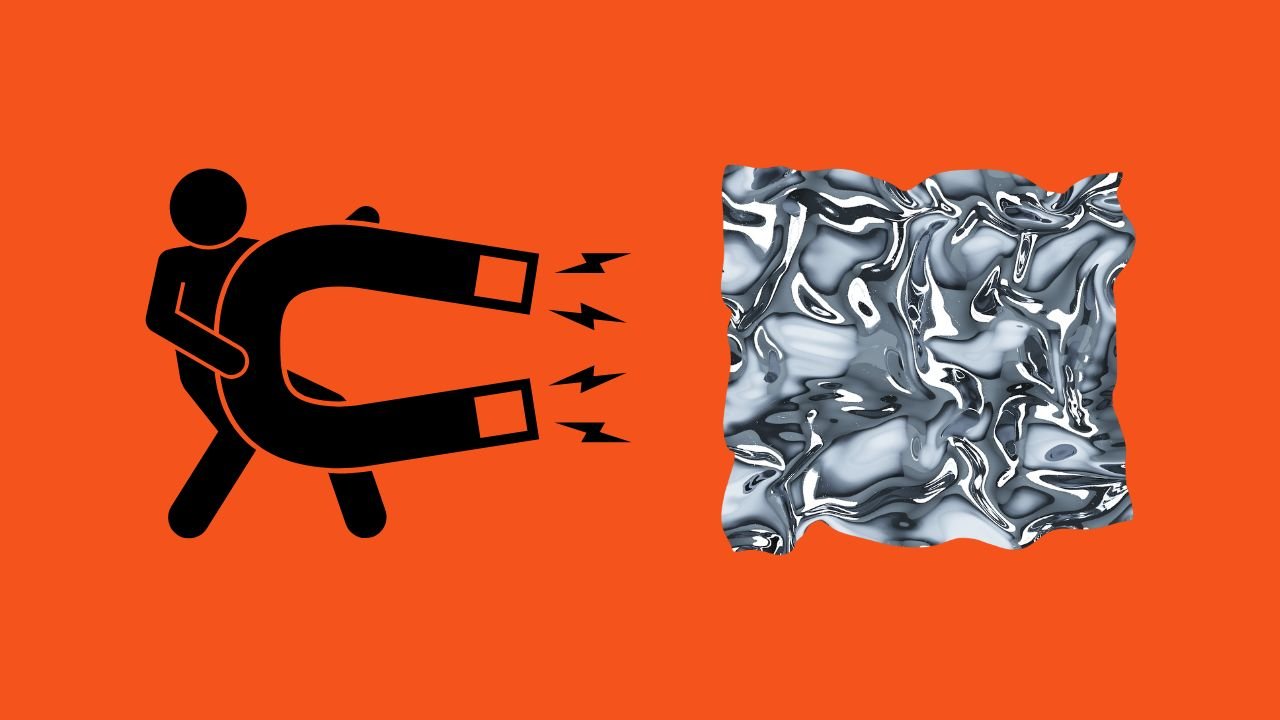
Different Factors Impacting the Magnetic Properties of the Stainless Steel
Various factors greatly influence why is stainless steel not magnetic. Some of these factors are:
Composition Elements
Different composition elements induce different properties such as:
- Chromium: Responsible for magnetism in martensitic and ferritic grades
- Nickel: It can reduce the overall magnetic effect in the specific stainless steel type
- Manganese: Induction of more manganese to replace the nickel can impact the magnetic behavior of the specific type.
If you need higher magnetic properties you need to balance these elements carefully.
Mechanical Deformation
Another name for this term is also cold working. If the stainless steel is non-magnetic then you can induce some magnetism or alter the magnetic properties through this working. In mechanical deformation or cold working you can bend or apply force to change the stainless steel type structure. The shift in structure for instance from austenitic or martensite results in magnetic features.
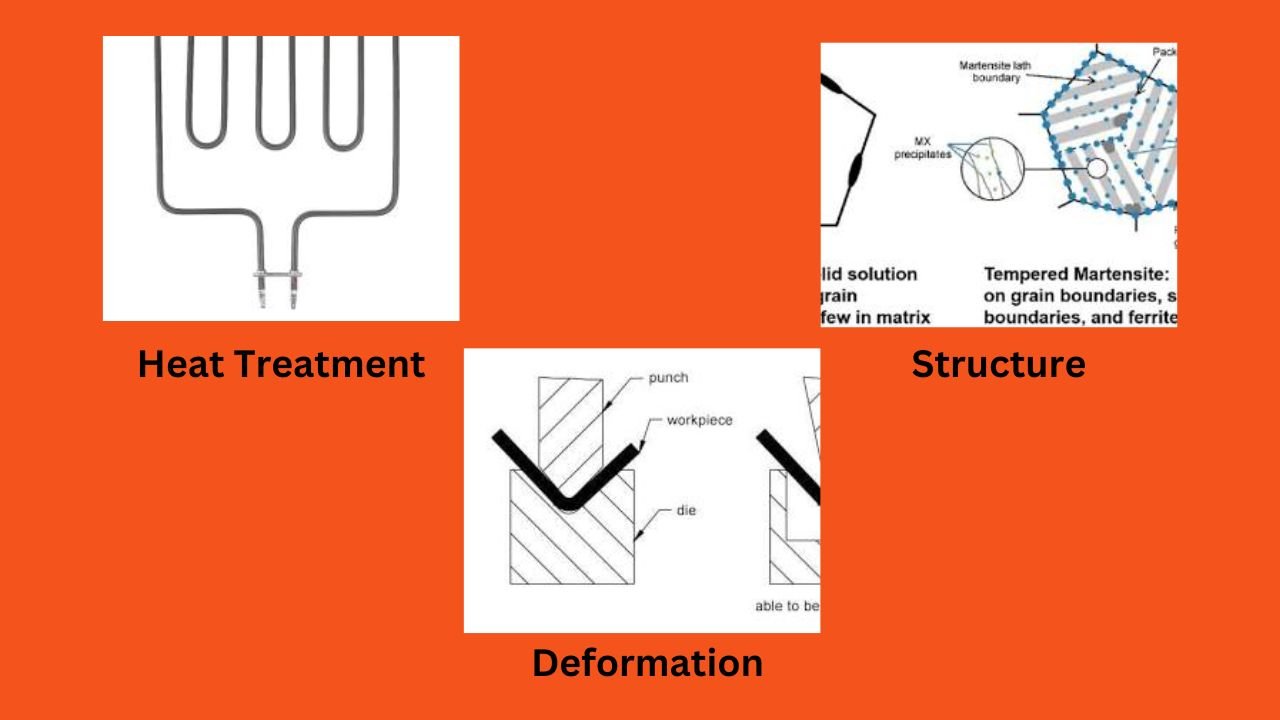
Heat Treatment
The processes like quenching and annealing can greatly influence the magnetic properties. For example:
- You can use annealing to develop or retain the austenitic structure. This eventually leads you to experience zero magnetism
- Quenching refers to the rapid cooling. This structure leads you to have a martensitic structure. You can add up greater magnetism this way
Getting insights on the heat treatment impact on magnetic characteristics help you choose the right material type.
Defects and Impurities
Existence of the defects and impurities can alter the level of magnetism within the specific material. When the phosphorus and sulfur content is present within the material in small amounts. They can impact the overall crystal structure of the element. Indirectly this effect the magnetic properties.
Apart from this the boundaries of grains or structure dislocation can lead you to experience the magnetic localized regions developments. This promotes the magnetism even in non-magnetic materials.
Conclusion
So, now you know the answer to “is stainless steel magnetic or nonmagnetic” or “which stainless steel is magnetic”. The answer also depends on the stainless steel or its type structure, composition elements, and the processes of treatment through which it passes. Before selecting the right stainless steel type assess the magnetism. This will help you avoid the selection of wrong type for the intended application. Whether you want magnetic steel or non-magnetic steel every type exist for selection.
Frequently Asked Questions
Is Stainless Steel Jewelry Magnetic?
The stainless steel jewelry do not feature magnetism. This is because the jewelry make use of austenitic steel which do not possess magnetic characteristics.
Is 416 Stainless Steel Magnetic?
Yes, the 416 series lies in the martensitic category which obviously a magnet grade. The key attribute of this steel is high hardness.
Is 440 Stainless Steel Magnetic?
440 Stainless steel also comes from the martensitic family. As mentioned above the martensitic is magnetic. It also has higher hardness and suitable for demanding applications.
Is 301 Stainless Steel Magnetic?
301 stainless steel features slight to moderate level of magnetism. You can increase the magnetism through employing cold working. As this type comes from austenitic class it is basically non-magnetic.
Is 17-4 Stainless Steel Magnetic?
Yes, the 17-4 stainless steel belongs to martensitic class and precipitation hardening category and is magnetic.
Is 303 Stainless Steel Magnetic?
No it is not magnetic. It belongs to austenitic class of stainless steel types. You can make it magnetic through heat treatment or cold working.
Is 410 Stainless Steel Magnetic?
Yes, because it lies in the martensitic class and have structure that promotes magnetism.
Is 18-8 Stainless Steel Magnetic?
The 18-8 stainless steel comes from austenitic class. It is basically a non-magnetic in nature.
Is 316l Stainless Steel Magnetic?
The 316l stainless steel is non magnetic. In the term “L” represents the lower carbon content.
Is Food Grade Stainless Steel Magnetic?
In food industry the non-magnetic stainless steel is popular. It keeps food ingredients safe and resist corrosion effectively.
Is 302 Stainless Steel Magnetic?
No, It has relation to austenitic class and features negligible magnetism.
Is Martensitic Stainless Steel Magnetic?
Yes the structure of the martensitic steel promotes the magnetism by featuring magnetic domains alignment.
Is 430 Stainless Steel Magnetic?
Yes, as it belongs to the ferritic family and features body-centered cubic structure which leads to considerable magnetism.
Is 400 Series Stainless Steel Magnetic?
Yes, it involves the structures of martensitic and ferritic, this is the reason it behaves as magnetic material.
Is 316 Stainless Steel Magnetic?
No, but you can make it magnetic by subjecting it to cold working or mechanical deformation.
Is 300 Series Stainless Steel Magnetic?
No, the face centered cube structure make this material non-magnetic.
Is Stainless Steel 304 Magnetic?
It is non-magnetic because of relation to the austenitic class.
Is Surgical Stainless Steel Magnetic?
No because it belongs to austenitic class and have structure which oppose the magnetic alignment to the external field. Non-magnetic steel in surgical equipment is beneficial and provide added safety.
Read More Relevant Articles:
Is Cast Iron Magnetic? – Types, Applications, Properties
Is Magnesium Magnetic? – Facts / Properties / Applications
Is Titanium Magnetic? – Properties/Applications/Analysis
is lead magnetic? Unveiling Properties, Implications, and Applications
